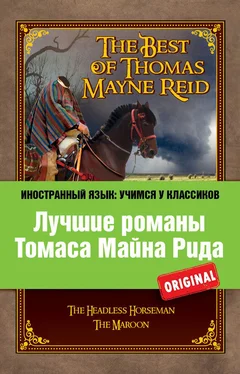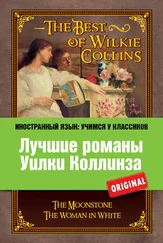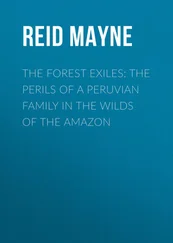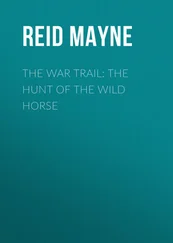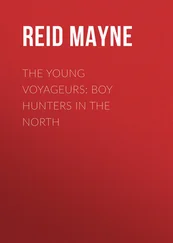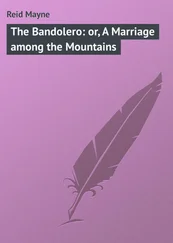“No, Señor, she hasn’t – not that I know of – not since the first time.”
“What, then?” inquired Diaz, evidently a little relieved, “She was here while he was at the posada. Something passed between them?”
“True, Don Miguel – something did pass, as I well know, being myself the bearer of it. Three times I carried him a basket of dulces , sent by the Doña Isidora – the last time also a letter.”
“A letter! You know the contents? You read it?”
“Thanks to your kindness to the poor peon boy, I was able to do that; more still – to make a copy of it.”
“You have one?”
“I have. You see, Don Miguel, you did not have me sent to school for nothing. This is what the Doña Isidora wrote to him.”
Diaz reached out eagerly, and, taking hold of the piece of paper, proceeded to devour its contents.
It was a copy of the note that had been sent among the sweetmeats.
Instead of further exciting, it seemed rather to tranquillise him.
“ Carrambo !” he carelessly exclaimed, as he folded up the epistle. “There’s not much in this, good José. It only proves that your mistress is grateful to one who has done her a service. If that’s all – ”
“But it is not all, Señor Don Miguel; and that’s why I’ve come to see you now. I’m on an errand to the pueblita . This will explain it.”
“Ha! Another letter?”
“ Sí, Señor ! This time the original itself, and not a poor copy scribbled by me.”
With a shaking hand Diaz took hold of the paper, spread it out, and read: —
Al Señor Don Mauricio Gerald.
Querido amigo !
Otra vez aquí estoy – con tío Silvio quedando! Sin novedades de V. no puedo más tiempo existir. La incertitud me malaba. Dígame que es V. convalescente! Ojalá, que estuviera asi! Suspiro en vuestros ojos mirar, estos ojos tan lindos y tan espresivos – a ver, si es restablecido vuestra salud. Sea graciosa darme este favor. Hay – opportunidad. En una cortita media de hora, estuviera quedando en la cima de loma, sobre la casa del tío. Ven, cavallero, ven !
Isidora Covarubio de los Llanos.
With a curse El Coyote concluded the reading of the letter. Its sense could scarce be mistaken. Literally translated it read thus: —
“Dear Friend, – I am once more here, staying with uncle Silvio. Without hearing of you I could not longer exist. The uncertainty was killing me. Tell me if you are convalescent. Oh! that it may be so. I long to look into your eyes – those eyes so beautiful, so expressive – to make sure that your health is perfectly restored. Be good enough to grant me this favour. There is an opportunity. In a short half hour from this time, I shall be on the top of the hill, above my uncle’s house. Come, sir, come!
“Isidora Covarubio De Los Llanos.”
“ Carajo ! an assignation!” half shrieked the indignant Diaz. “That and nothing else! She, too, the proposer. Ha! Her invitation shall be answered; though not by him for whom it is so cunningly intended. Kept to the hour – to the very minute; and by the Divinity of Vengeance —
“Here, José! this note’s of no use. The man to whom it is addressed isn’t any longer in the pueblita, nor anywhere about here. God knows where he is! There’s some mystery about it. No matter. You go on to the posada, and make your inquiries all the same. You must do that to fulfil your errand. Never mind the papelcito [268]; leave it with me. You can have it to take to your mistress, as you come back this way. Here’s a dollar to get you a drink at the inn. Señor Doffer keeps the best kind of aguardiente. Hasta luego ! [269]”
Without staying to question the motive for these directions given to him, José, after accepting the douceur , yielded tacit obedience to them, and took his departure from the jacalé.
He was scarce out of sight before Diaz also stepped over its threshold. Hastily setting the saddle upon his horse, he sprang into it, and rode off in the opposite direction.
The sun has just risen clear above the prairie horizon, his round disc still resting upon the sward, like a buckler of burnished gold. His rays are struggling into the chapparal, that here and there diversifies the savanna. The dew-beads yet cling upon the acacias, weighting their feathery fronds, and causing them to droop earthward, as if grieving at the departure of the night, whose cool breeze and moist atmosphere are more congenial to them than the fiery sirocco of day. Though the birds are stirring – for what bird could sleep under the shine of such glorious sunrise? – it is almost too early to expect human being abroad – elsewhere than upon the prairies of Texas. There, however, the hour of the sun’s rising is the most enjoyable of the day; and few there are who spend it upon the unconscious couch, or in the solitude of the chamber.
By the banks of the Leona, some three miles below Fort Inge, there is one who has forsaken both, to stray through the chapparal. This early wanderer is not afoot, but astride a strong, spirited horse, that seems impatient at being checked in his paces. By this description, you may suppose the rider to be a man; but, remembering that the scene is in Southern Texas still sparsely inhabited by a Spano-Mexican population – you are equally at liberty to conjecture that the equestrian is a woman. And this, too, despite the round hat upon the head – despite the serapé upon the shoulders, worn as a protection against the chill morning air – despite the style of equitation, so outré to European ideas, since the days of La Duchesse de Berri; and still further, despite the crayon-like colouring on the upper lip, displayed in the shape of a pair of silken moustaches. More especially may this last mislead; and you may fancy yourself looking upon some Spanish youth, whose dark but delicate features bespeak the hijo de algo [270], with a descent traceable to the times of the Cid.
If acquainted with the character of the Spano-Mexican physiognomy, this last sign of virility does not decide you as to the sex. It may be that the rider in the Texan chapparal, so distinguished, is, after all, a woman!
On closer scrutiny, this proves to be the case. It is proved by the small hand clasping the bridle-rein; by the little foot, whose tiny toes just touch the “estribo [271]” – looking less in contrast with the huge wooden block that serves as a stirrup; by a certain softness of shape, and pleasing rotundity of outline, perceptible even through the thick serapé of Saltillo; and lastly, by the grand luxuriance of hair coiled up at the back of the head, and standing out in shining clump beyond the rim of the sombrero. After noting these points, you become convinced that you are looking upon a woman, though it may be one distinguished by certain idiosyncrasies. You are looking upon the Doña Isidora Covarubio de los Llanos.
You are struck by the strangeness of her costume – still more by the way she sits her horse. In your eyes, unaccustomed to Mexican modes, both may appear odd – unfeminine – perhaps indecorous.
The Doña Isidora has no thought – not even a suspicion – of there being anything odd in either. Why should she? She is but following the fashion of her country and her kindred. In neither respect is she peculiar.
She is young, but yet a woman. She has seen twenty summers, and perhaps one more. Passed under the sun of a Southern sky, it is needless to say that her girlhood is long since gone by. In her beauty there is no sign of decadence. She is fair to look upon, as in her “buen quince” (beautiful fifteen), Perhaps fairer. Do not suppose that the dark lining on her lip damages the feminine expression of her face. Rather does it add to its attractiveness. Accustomed to the glowing complexion of the Saxon blonde, you may at first sight deem it a deformity. Do not so pronounce, till you have looked again. A second glance, and – my word for it – you will modify your opinion. A third will do away with your indifference; a fourth change it to admiration!
Читать дальше
Конец ознакомительного отрывка
Купить книгу
